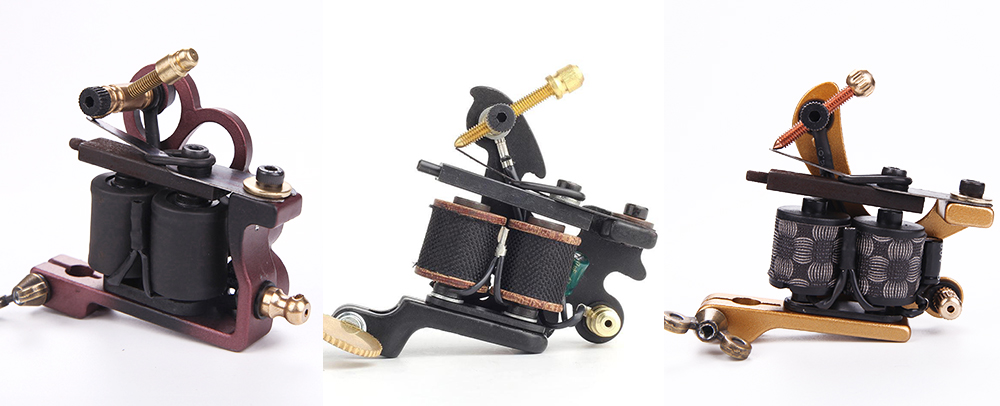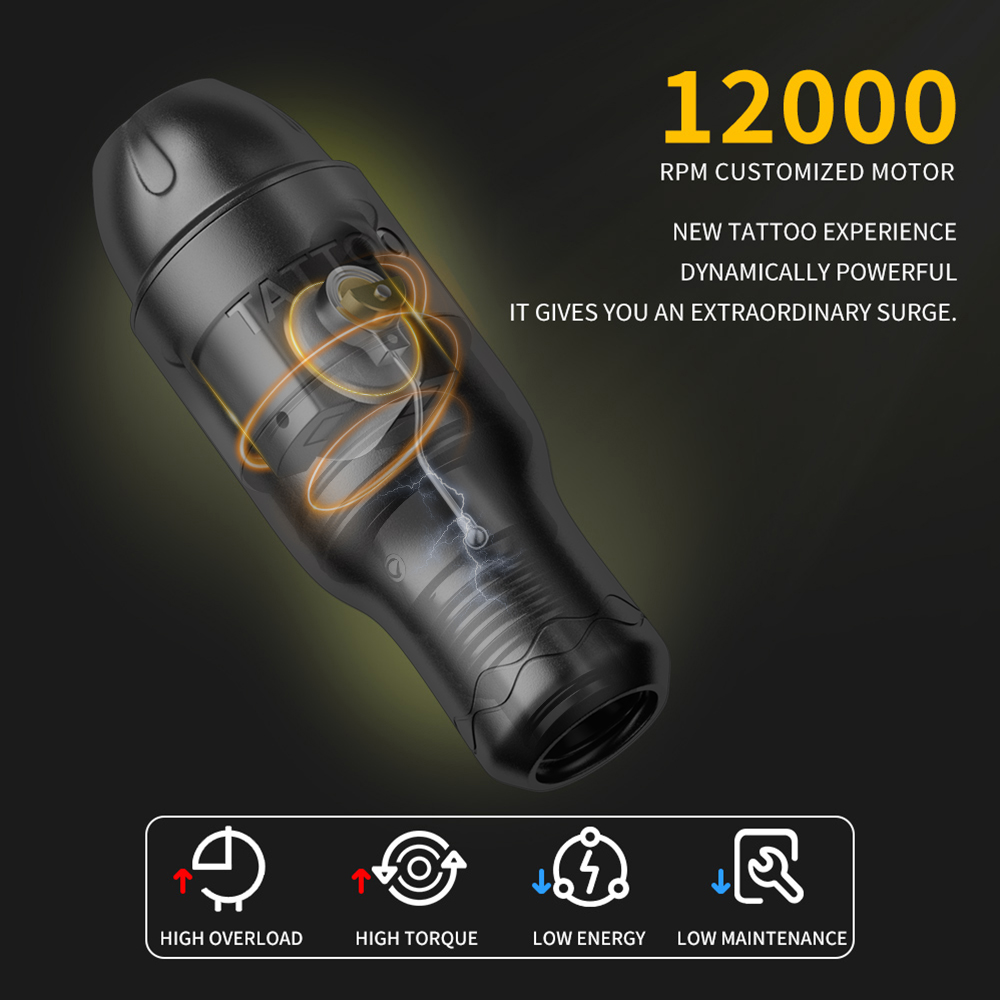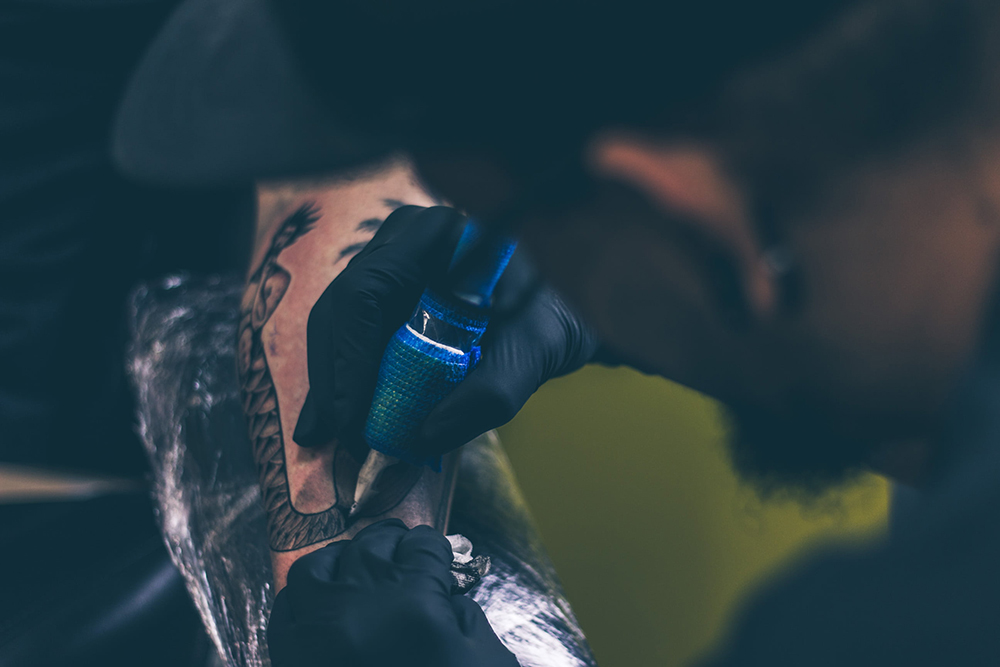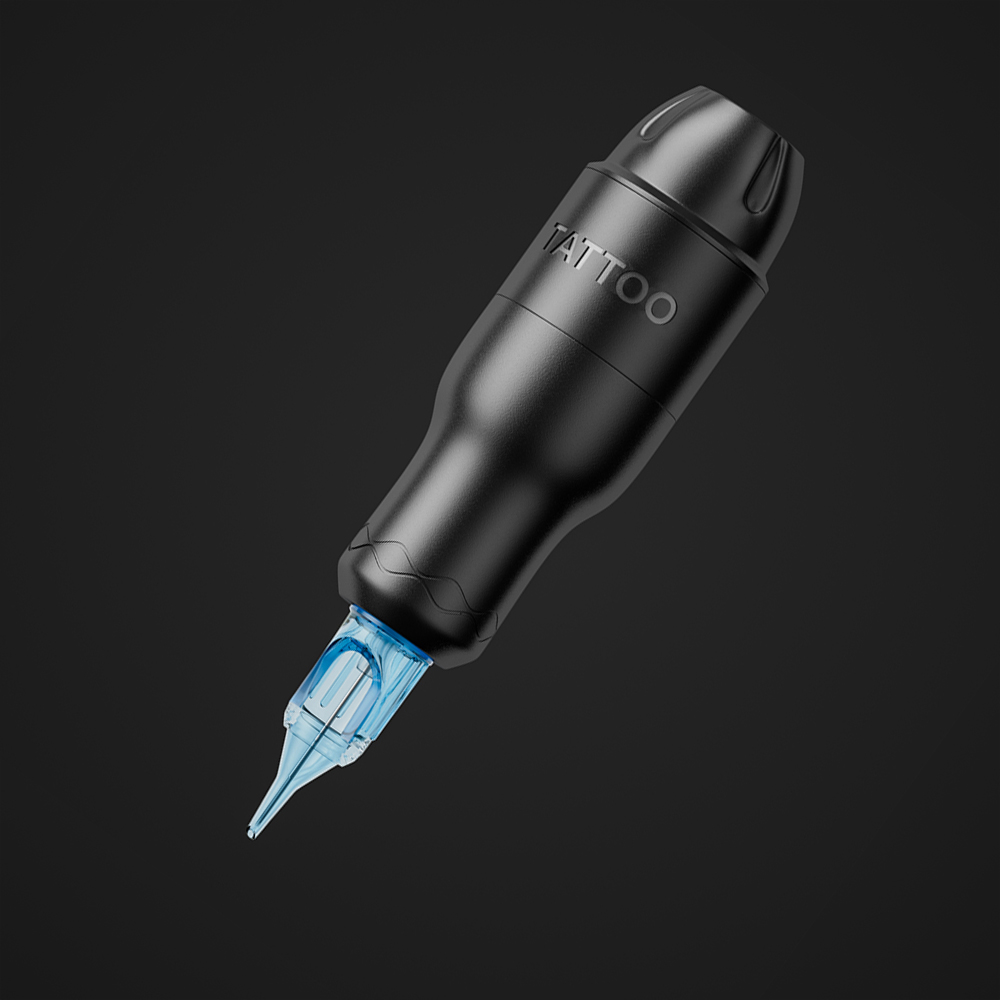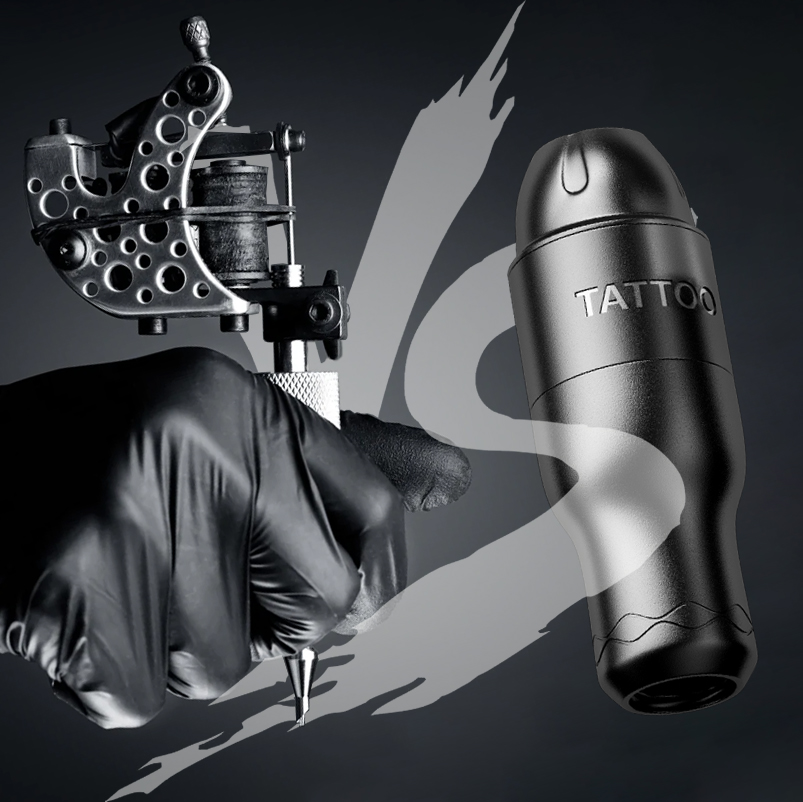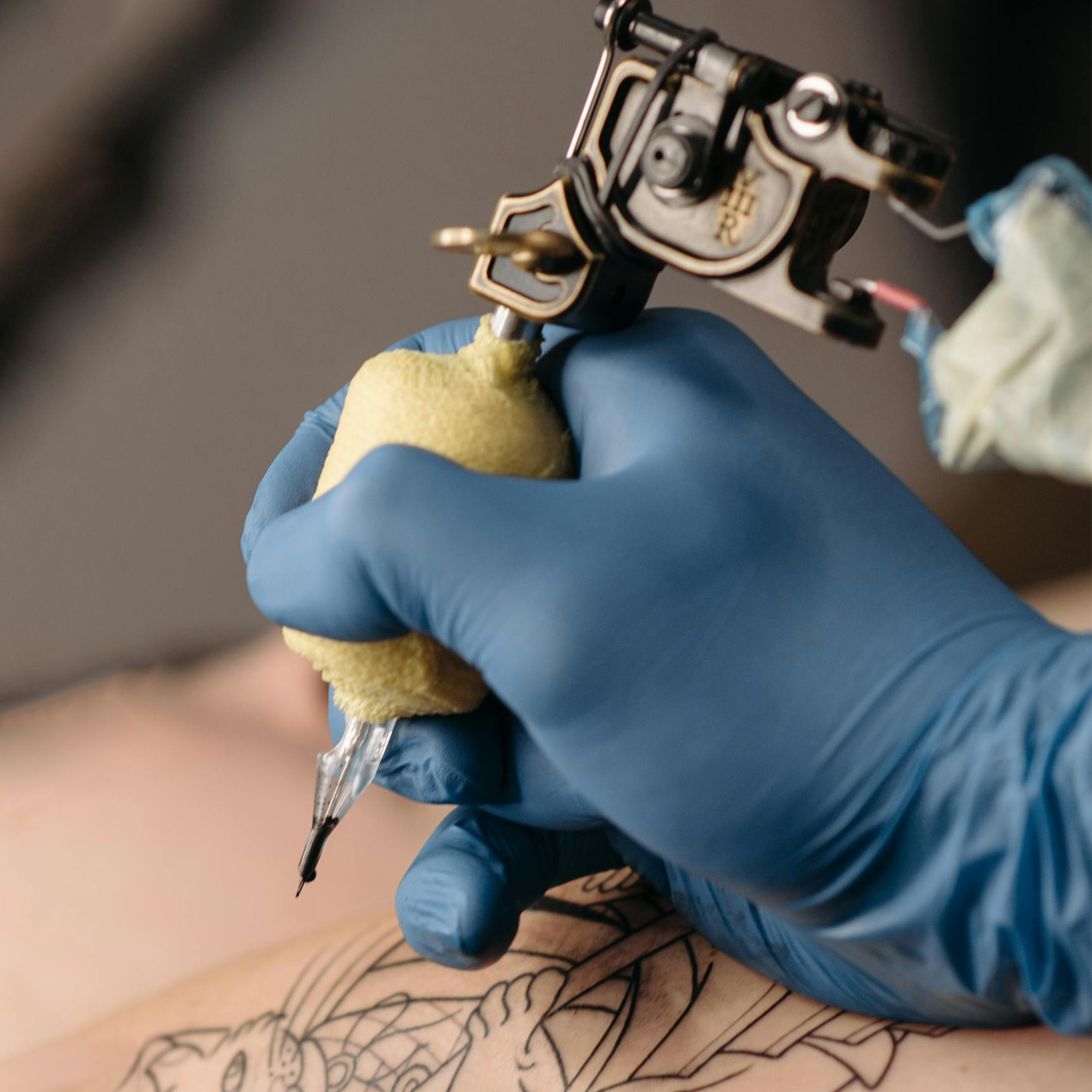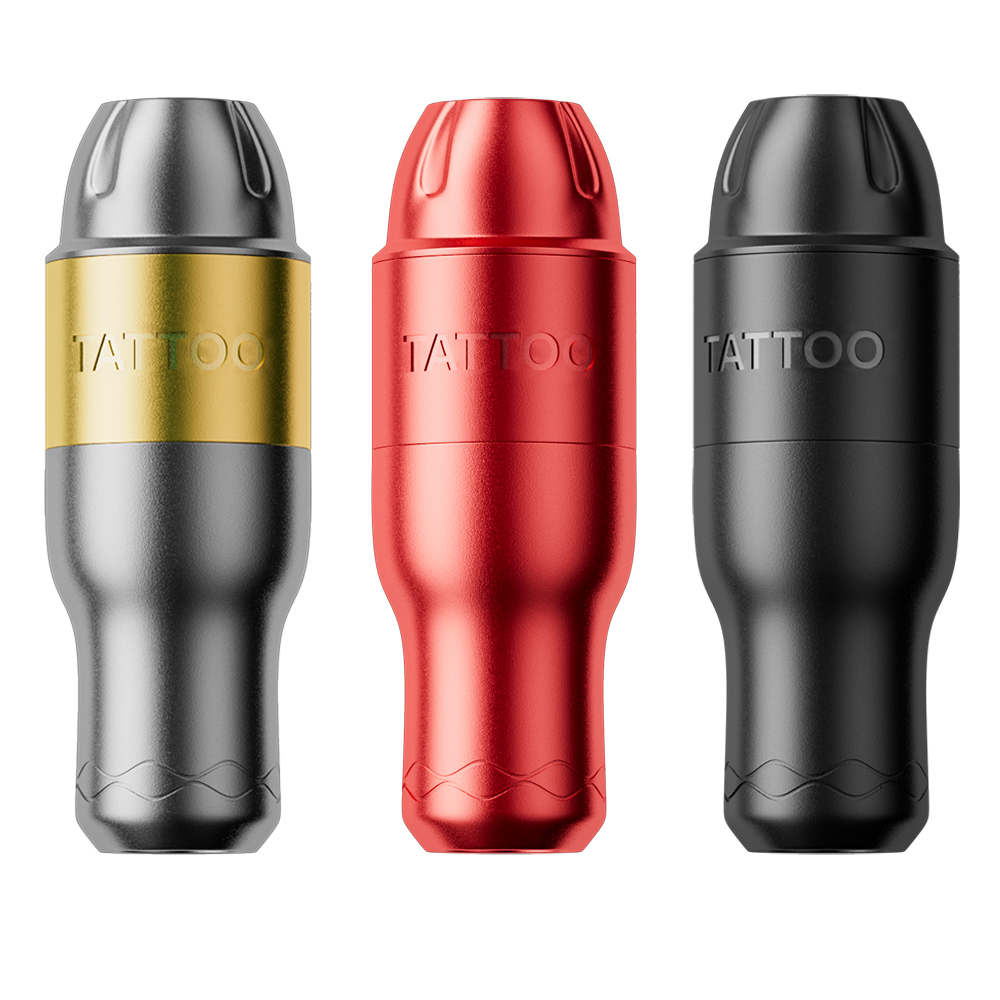For any passionate new tattoo artist, selecting your first professional tattoo machine is a critical step into your career. The dazzling array of machine types, brands, and price points on the market can be overwhelming. Don’t worry, this guide is here to help you cut through the noise and make an informed decision.
1. Understanding the Basics: Coil vs. Rotary Machines
Coil Machines
-
How They Work: Coil machines operate on an electromagnetic principle. A current passes through two coils, creating a magnetic field that rapidly attracts and releases an armature bar, which in turn drives the needle bar in an up-and-down motion.
-
Characteristics: Known for their distinct buzzing sound, strong vibration, and powerful hit. They are the classic choice for traditional styles (like American Traditional and Neo-Traditional) and are particularly favored for their ability to create bold, crisp lines. They require a significant amount of skill to tune and maintain properly.
-
Are They for Beginners? If you are dedicated to traditional styles and are willing to invest the time to master the art of tuning, a coil machine can be a rewarding choice. However, they are generally heavier and require more complex maintenance.
Rotary Machines
-
How They Work: These machines use a small, contained DC motor to drive the needle bar. This can be a direct-drive system or an indirect system using a cam wheel or slider mechanism.
-
Characteristics: They are remarkably quiet, have minimal vibration, and run with consistent stability, which often results in less trauma to the skin. Rotary machines are incredibly versatile, excelling at lining, shading, and color packing, making them ideal for a wide range of styles, especially Realism. Most are “plug-and-play” and require very little maintenance.
-
Are They for Beginners? Highly recommended! Rotary machines are far more user-friendly for beginners. Their ease of use allows you to focus on developing your artistic technique instead of getting bogged down by machine tuning. The market offers a wide variety of rotary machines with different strokes and drive systems to suit any need.
2. Key Factors to Consider
-
Budget: As a beginner, you don’t need the most expensive, top-of-the-line machine. However, you must avoid extremely cheap, low-quality “toy” machines that lack any real power or reliability. Set a reasonable budget for a professional-grade entry-level or mid-range model from a reputable brand. Remember, a good tool is an investment in your career.
-
Primary Style Focus: While rotary machines are more versatile, if you are determined to specialize in the bold, hard-hitting lines of traditional tattooing, experiencing the power of a coil machine is a valid path. For most beginners, however, a stable rotary machine will allow you to adapt to a much wider range of styles and techniques.
-
Weight and Ergonomics: You will be holding this machine for long hours. Comfort is paramount. Opt for a machine that is well-balanced, feels good in your hand, and is not excessively heavy to minimize hand fatigue.
-
Brand Reputation and After-Sales Support: Choose brands or suppliers with a solid reputation and reliable customer support. This ensures you can get timely help if your machine needs maintenance or you encounter any issues.
3. Our Advice for New Artists
-
Start with a Rotary Machine: They are generally easier to control and will help you build confidence quickly.
-
Consult Experienced Artists: Ask your mentor or other professional artists for their recommendations and experiences with different machines.
-
Focus on the Fundamentals: A machine is just a tool. A strong foundation in drawing, a thorough understanding of skin, and impeccable hygiene practices are the true cornerstones of a great tattoo artist.
-
Choose a Reliable Supplier: Reputable suppliers, like us (MIHERT), not only provide high-quality tattoo machines but are also happy to offer expert advice to help you make the right choice.
The Ultimate Tattoo Machine Showdown: Coil vs. Rotary
In a tattoo artist’s toolkit, the machine is the centerpiece. The debate between coil and rotary machines is a timeless one. They are more than just tools; they represent different working philosophies and tactile experiences. So, which one is right for you? Let’s dive deep.
I. The Coil Tattoo Machine: The Power of a Classic
-
Working Principle: Utilizes electromagnetism. Two coils create a magnetic field to attract and release an armature bar, which drives the attached needle bar.
-
Advantages:
-
Tactile Feedback: The characteristic “slap” and vibration give experienced artists clear feedback on how the needle is interacting with the skin.
-
Highly Tunable: Performance can be finely adjusted by tuning the front and back springs and the contact screw gap, allowing for complete personalization (this is also its learning curve).
-
The Soul of Traditional Styles: Many artists still swear by the direct, punchy power of a coil machine for creating the bold, saturated lines essential to American Traditional tattoos.
-
Relative Cost: Some entry-level and mid-range coil machines can be more budget-friendly.
-
-
Disadvantages:
-
Noise and Vibration: They are loud and vibrate heavily, which can lead to hand fatigue during long sessions.
-
Weight: Generally heavier than their rotary counterparts.
-
Maintenance and Tuning: Require regular cleaning and adjustment, presenting a steep learning curve for novices.
-
Potentially Harsher on Skin: If tuned or operated improperly, they can cause more skin trauma.
-
II. The Rotary Tattoo Machine: The Epitome of Stability and Efficiency
-
Working Principle: Employs a small DC motor. It converts the motor’s rotational motion into a linear, back-and-forth motion for the needle bar via a direct-drive, cam wheel, or slider mechanism.
-
Advantages:
-
Smooth and Quiet Operation: Minimal noise and vibration create a more comfortable environment for both the artist and the client.
-
Lightweight and Ergonomic: Often designed to be more compact, lightweight, and comfortable to hold.
-
Easy to Use and Maintain: Most are plug-and-play, requiring no complex tuning. Routine maintenance is typically limited to cleaning and occasional lubrication.
-
Highly Versatile: Suitable for all techniques: lining, shading, color packing, and dotwork. Different stroke lengths cater to specific tasks (e.g., a short stroke for soft shading, a long stroke for bold lines and color packing).
-
Gentler on the Skin: The consistent needle frequency and smooth delivery help minimize unnecessary skin damage and can promote faster healing.
-
-
Disadvantages:
-
Less Tactile Feedback: For artists accustomed to the “feel” of a coil machine, the smoother operation of a rotary may take time to get used to.
-
Initial Cost: High-quality rotary machines, especially premium wireless pen models, can have a higher upfront cost.
-
Complex Repairs: If the motor itself fails, it typically requires professional repair or replacement rather than a simple DIY fix.
-
III. How to Choose: It’s All About Style and Preference
-
Love Traditional and need maximum line power? An experienced artist or a dedicated learner might stick with a coil machine.
-
Seeking versatility, efficiency, and comfort? A rotary machine is an excellent choice, especially for styles like realism, dotwork, colorwork, and New School.
-
Just starting out? We strongly recommend beginning with a rotary machine for a smoother learning curve.
-
On a tight budget? You can find high-value coil machines or entry-level rotary machines from reputable brands.
-
Want ultimate portability and freedom? The wireless rotary tattoo pen is the leading trend for a reason.
 CX Tattoo Supply
CX Tattoo Supply

